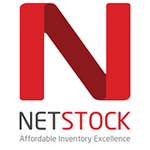What Is Sales And Operations Planning Software?
Sales and Operations Planning (S&OP) software is an effective tool for streamlining and improving the supply chain process for organizations of all sizes. This program enables businesses to connect their sales and operational strategies, successfully balancing demand and supply while increasing overall efficiency and customer happiness.
At its foundation, S&OP software aggregates data from several sources, including sales projections, inventory levels, and production plans, to provide a holistic view of the entire supply chain. This enables organizations to make informed decisions and develop realistic plans to achieve their financial and operational objectives. Companies using S&OP software may precisely forecast future demand and organize their production and inventory appropriately, lowering the risk of stockouts or overstocking.
It also promotes collaboration across departments, breaking down silos and ensuring that everyone is working toward the same goals. In addition, S&OP software provides enhanced analytics and reporting capabilities, enabling firms to spot possible supply chain concerns and opportunities. This aids in making proactive judgments and implementing corrective activities to keep a competitive advantage in the marketplace.
Furthermore, S&OP software connects with other business systems like ERP and CRM, allowing for a continuous flow of data and increasing overall operational efficiency. It also provides real-time visibility and tracking, allowing firms to analyze their progress and make necessary modifications.
What Are The Recent Trends In Sales And Operations Planning Software?
Sales and operations planning (S&OP) software is an essential tool for firms who want to simplify their sales and operations processes. With the continually changing business world, staying up to date on the newest trends in S&OP software is critical for making an informed decision when selecting the best software for your company's needs.
Buyers should be aware of the following recent sales and operations planning software trends:
1. Cloud-Based Solutions: A notable trend in S&OP software is the migration to cloud-based solutions. With the development of remote work and the demand for real-time collaboration, more firms are turning to cloud-based software to handle their sales and operations planning. This trend provides enhanced flexibility, scalability, and cost-effectiveness to businesses of all sizes.
2. Advanced Analytics: Data is increasingly important for making informed business decisions. As a result, S&OP software now includes powerful analytics capabilities that give customers with detailed insights into their sales and operations processes. These insights can help firms find areas for improvement and make data-driven decisions that increase productivity and profitability.
3. Artificial Intelligence (AI) And Machine Learning (ML): AI and ML have revolutionized sales and operations planning. These technologies can analyze massive volumes of data, forecast future demand, and automate human tasks. This trend has enabled firms to enhance forecasting accuracy, shorten lead times, and optimize inventory levels.
4. Integration With Other Business Systems: S&OP software is increasingly being integrated with other business systems such as Enterprise Resource Planning (ERP), Customer Relationship Management (CRM), and Supply Chain Management (SCM). This connection allows for a continuous flow of data between multiple systems, removing data silos and offering a comprehensive perspective of corporate processes.
5. Collaborative Planning: In today's society, teamwork is essential for making sound decisions. S&OP software has grown to provide collaborative planning, enabling multiple teams and departments to collaborate in real time, regardless of location. This trend encourages cross-functional collaboration, enhances communication, and enables firms to make better informed planning decisions.
6. Mobile Compatibility: With the growing usage of mobile devices in the workplace, S&OP software now includes mobile compatibility, allowing users to access it from their smartphones and tablets. This tool improves collaboration because team members may access critical data and make planned decisions while on the go.
Keeping up with these trends can help firms remain ahead of the competition and improve their sales and operational procedures. When selecting S&OP software, seek for a system that combines these trends to guarantee your company remains nimble, efficient, and competitive in today's dynamic business market.
Benefits Of Using Sales And Operations Planning Software
Sales and operations planning software, often known as S&OP software, is a useful tool for firms of all sizes and industries. This type of software enables businesses to efficiently plan and manage their sales and operations processes, leading to enhanced efficiency, productivity, and overall success.
Let's explore, we'll look at the advantages of utilizing S&OP software and why it should be a top priority for any firm wanting to simplify its processes.
1. Increased Visibility And Collaboration: One of the most significant advantages of S&OP software is its ability to give firms more visibility into their sales and operations processes. Businesses can use real-time data to track inventory levels, sales estimates, and production plans, allowing for more informed decision-making and planning. Furthermore, this software promotes improved communication across departments, ensuring that everyone is on the same page and working toward the same goals.
2. Streamlined Planning Process: Planning is an important part of every business's success, and S&OP software simplifies and streamlines the planning process. With strong forecasting capabilities, this program can generate precise sales and operations plans based on historical data and industry trends. This saves firms time and effort in manual planning while ensuring that their plans are reasonable and attainable.
3. Effective Inventory Management: Inventory management is critical to a company's profitability, and S&OP software can help optimize the process. Businesses may guarantee that they have enough inventory on hand to fulfill demand by using real-time inventory data and forecasting technologies. This prevents overstocking, lowers expenses, and increases customer happiness.
4. Improved Customer Service. Customer satisfaction is critical to any firm, and S&OP software can assist increase it by optimizing the manufacturing process. Businesses that use accurate sales predictions and inventory data can meet client demands more quickly and efficiently, resulting in happy customers and improved revenues.
5. Cost Savings: Implementing S&OP software can lead to significant cost savings for enterprises. Businesses can save money on labor and storage costs by streamlining procedures, decreasing superfluous inventory, and increasing efficiency. This also enables businesses to manage their resources more effectively, resulting in additional cost savings.
6. Better Decision-Making: S&OP software offers firms with reliable, real-time data, allowing them to make informed decisions. This encompasses everything from recognizing sales patterns to forecasting supply chain interruptions. With this knowledge, organizations may make proactive decisions to reduce risks and increase profitability.
Important Factors To Consider While Purchasing Sales And Operations Planning Software?
When it comes to choosing sales and operations planning software, buyers need examine many key elements to make the best option for their company. These factors include:
1. Scalability: One of the most significant considerations is whether the software can handle the size of your organization. Will the software be able to handle increased data and operations as your firm grows? It's critical to select a system that can scale with your company without generating disruptions.
2. Integration Capabilities: Another important consideration is the software's ability to integrate with your current systems and tools. This will provide a seamless data flow and prevent any duplication of work. Make that the program is compatible with your ERP, CRM, and other important platforms.
3. User-Friendliness: Software that is easy to use can save you time and money on training. Look for a solution with an intuitive UI and simple navigation. It should also include training and support alternatives to help your team get up to speed quickly.
4. Customization And flexibility: Because each organization has distinct demands and operations, it's critical to select software that can be tailored to your individual requirements. The software should also be flexible enough to respond to changes in your business procedures and strategies.
5. Accuracy and dependability: Sales and operations Planning is a key procedure that demands accuracy and dependability. It is critical to select software that can deliver accurate forecasts, data analysis, and perform complex computations without errors.
6. Analytics And Reporting Capabilities: The software should include powerful analytics and reporting tools that may provide insights into your sales and operational performance. This will allow you to make more informed judgments and highlight areas for improvement.
7. Cost: While the software's features and capabilities are significant, so is its pricing. Make sure you calculate the whole cost of ownership, including licensing fees, implementation costs, and continuing maintenance payments.
8. Vendor Reputation And Support: Before making a purchase, you should examine the vendor's reputation and customer service. Read reviews, ask for references, and look at their track record of successful implementations to verify you're selecting a dependable partner for your company.
9. Mobile Compatibility: In today's fast-paced corporate world, having access to real-time data on the road is critical. Look for software that is mobile-compatible, allowing your staff to view and update information from anywhere, at any time.
10. Future Updates And Developments: Technology is continuously changing, and so should your software. Choose a software vendor who updates and develops their product on a regular basis, ensuring that it remains current and competitive in the market.
By taking these critical elements into account, buyers may choose the best sales and operations planning software for their needs, resulting in increased efficiency, accuracy, and profitability.
What Are The Key Features To Look For In Sales And Operations Planning Software?
When looking for Sales and Operations Planning (S&OP) software, it is critical to choose a solution that addresses your specific business requirements and goals. Companies that use the correct S&OP software can improve sales and operations alignment, increase productivity, and make better decisions.
When comparing different S&OP software alternatives, several critical elements should be considered:
1. Demand Planning: Look for software with reliable demand forecasting and planning capabilities. This function will assist keep your inventory levels balanced, lowering the danger of overstocking or stockouts.
2. Supply Planning: A decent S&OP software should have supply planning features. This enables organizations to properly manage their supply chain processes, from raw materials to final products, while ensuring timely delivery to satisfy client demand.
3. Inventory Management: Effective inventory management is critical to successful S&OP. Look for software that provides real-time visibility into inventory levels, allowing you to optimize stock levels and save money.
4. Sales Forecasting: The software should have advanced sales forecasting capabilities that use previous data and trends to properly anticipate future sales. This will enable organizations to make informed, data-driven decisions.
5. Cooperation And Communication: S&OP software must be able to allow cooperation and communication among different departments and teams. This improves the coordination and alignment of sales and operational activities.
6. Scenario Planning: Look for software that allows you to conduct "what-if" scenarios to determine the impact of various company decisions on sales and operations. This tool enables businesses to prepare for future disruptions and make educated decisions.
7. Reporting And Analytics: S&OP software should provide detailed reporting and analytics to help you track performance, detect patterns, and make data-driven choices.
8. User-Friendly Interface: A user-friendly interface is critical for increasing adoption and ensuring that all team members can browse and utilize the software's functionality.
9. Scalability: As businesses develop, so do their requirements. Choose software that can grow with your company's needs, allowing for new features and increasing user capacity.
10. Integration Capabilities: Finally, compatibility with other applications and systems is critical. Look for software that may be integrated into your current systems, eliminating manual data entry and enhancing efficiency.
Taking these crucial aspects into account, organizations can choose S&OP software that best meets their specific requirements and allows them to efficiently fulfill their sales and operations objectives. Don't cut corners when it comes to S&OP software, as it is a critical instrument for achieving organizational performance.
Why Do Businesses Need Sales And Operations Planning Software?
Businesses require Sales and Operations Planning (S&OP) software to properly match their sales and operational strategy. This type of software gives firms a comprehensive perspective of their whole supply chain, allowing them to make more informed decisions that improve operations and profitability. One of the primary reasons why firms engage in S&OP software is to increase their forecasting capabilities.
Accurate and real-time demand forecasting allows firms to better plan their production, inventory, and distribution, ensuring that the appropriate products are in the right places at the right time. This not only prevents stock shortages or overstocking, but it also provides for more efficient resource utilization and cost savings. Furthermore, S&OP software helps firms identify possible supply chain interruptions and bottlenecks, allowing them to fix these issues before they disrupt operations.
This reduces the likelihood of product delays, shortages, and other disturbances that could negatively impact the company's bottom line. S&OP software also encourages collaboration and communication across various divisions within a company. This ensures that all stakeholders are aligned and working towards the same objectives, resulting in increased productivity and efficiency.
With comprehensive access into sales and operations data, teams may instantly discover any gaps or anomalies, enabling for faster action and more successful decisions. Furthermore, S&OP software offers powerful analytics and reporting capabilities, allowing firms to monitor key performance indicators (KPIs) and assess the effectiveness of their plans and initiatives. This enables organizations to continuously improve and optimize their processes, resulting in higher customer happiness and loyalty.
How Much Time Is Required To Implement Sales And Operations Planning Software?
Implementation time for sales and operations planning software varies based on the program selected, the complexity of the organization's procedures, and the level of customisation necessary. However, successful implementation often takes between 4 and 6 months. During this time, the organization's sales and operations planning team will collaborate with the software provider to map out present processes and data, establish necessary revisions and configurations, and teach personnel on how to utilize the new system efficiently.
Organizations must remember that the implementation process entails more than just installing software; it also includes adopting any process changes and educating staff to use the program successfully. To achieve a seamless and timely implementation, businesses must have a committed team that leads the process, communicates effectively with all stakeholders, and actively participates in the training and testing phases.
Organizations should also perform extensive research before selecting a software provider who provides strong implementation support and has a track record of successful installations. Overall, while the implementation process may take some time and resources, the long-term benefits of having a more efficient sales and operations planning process can far surpass the original investment.
What Is The Level Of Customization Available In Sales And Operations Planning Software?
One of the most important considerations when selecting Sales and Operations Planning (S&OP) software is the level of flexibility available. This refers to the software's ability to be customized to match the unique needs and processes of a given firm. Most S&OP software provides a high level of flexibility, allowing firms to tailor the software to their specific requirements.
This includes tailoring planning templates, data fields, workflows, and reports. One of the primary advantages of having configurable S&OP software is its ability to adapt to changing business needs. This is particularly critical in today's fast-paced business climate, where processes and strategies are continuously changing. Businesses that use customisable software can simply adjust it to suit with their present procedures, eliminating the need for costly and time-consuming re-implementation.
The level of customisation offered in S&OP software enables firms to focus on their own aims and ambitions. For example, a company may have a distinct forecasting approach or a specialized strategy for measuring KPIs. They can combine these into the system using customisable software to obtain more accurate and relevant data for decision-making purposes. Businesses should carefully consider the level of customization provided by various S&OP software providers.
Some software allows for minimal customization, while others provide a more advanced and flexible approach. It is also critical to assess the usability of the modification options, since some software may necessitate technical knowledge or assistance.
Which Industries Can Benefit The Most From Sales And Operations Planning Software?
Sales and Operations Planning (S&OP) is a vital company process that entails aligning sales and operational strategies to satisfy client expectations while increasing profitability. S&OP software is a useful tool for streamlining this process by combining data from several departments and delivering real-time insights for decision-making. While S&OP software can assist a variety of industries, certain sectors will profit the most from its deployment.
The following sectors can benefit the most from S&OP software:
1. Manufacturing: S&OP software is a game changer for industrial businesses. With complex supply chains, tight manufacturing schedules, and unpredictable demand, it can be difficult to maintain inventory levels while satisfying customer needs. S&OP software helps manufacturers with accurate demand forecasts, inventory optimization, and effective production planning, resulting in increased operational efficiency and lower costs.
2. Retail: In the highly competitive and fast-paced retail industry, a thorough understanding of client demand is critical to success. S&OP software enables merchants to properly estimate demand, effectively organize promotions and discounts, and optimize inventory levels to assure order fulfillment on time. This leads to increased sales, higher customer happiness, and greater profitability.
3. Consumer Goods: S&OP software is essential in sectors dealing with fast-moving consumer goods (FMCG) or consumer packaged goods (CPG). These industries experience fluctuating demand, short product lifecycles, and fierce rivalry. S&OP software allows them to respond swiftly to changing market conditions, reduce stockouts, and optimize supply chain operations, resulting in higher sales and lower expenses.
4. Healthcare: The healthcare sector is continually changing, with providers confronting issues such as managing patient demand, optimizing resources, and lowering costs. Healthcare providers can use S&OP software to estimate patient visits, arrange staff schedules, and manage inventory levels, resulting in more efficient operations and improved patient care.
5. Automotive: The automotive sector has a complicated supply chain that often spans multiple regions and countries. S&OP software enables automotive businesses to successfully manage the manufacturing of various vehicles and their components, plan for raw material acquisition, and respond promptly to changes in demand, resulting in cost savings and increased customer satisfaction.
Conclusion
After conducting extensive study and analysis on various sales and operations planning software, we concluded that a well-implemented S&OP solution can greatly increase your organization's overall performance. The platform improves sales and operational teams' communication and collaboration, allowing them to make data-driven decisions that boost productivity, lower expenses, and increase profitability.
When selecting S&OP software, take in mind that each solution has different features and capabilities. When making a final decision, keep your organization's specific needs and operations in mind. Furthermore, it is critical to choose user-friendly software that interfaces with your existing systems and provides outstanding customer service to ensure a seamless setup and continued use.
We strongly advise extensively researching each software's features, cost, and customer reviews before making a final decision. It is also advisable to seek a demo or trial of the program to assess its fit for your firm. Investing in dependable S&OP software can be transformative for your company, offering visibility, agility, and optimization to your sales and operations processes. We hope this buyer's guide has helped you understand the critical things to consider and make an informed decision to propel your business forward.

















